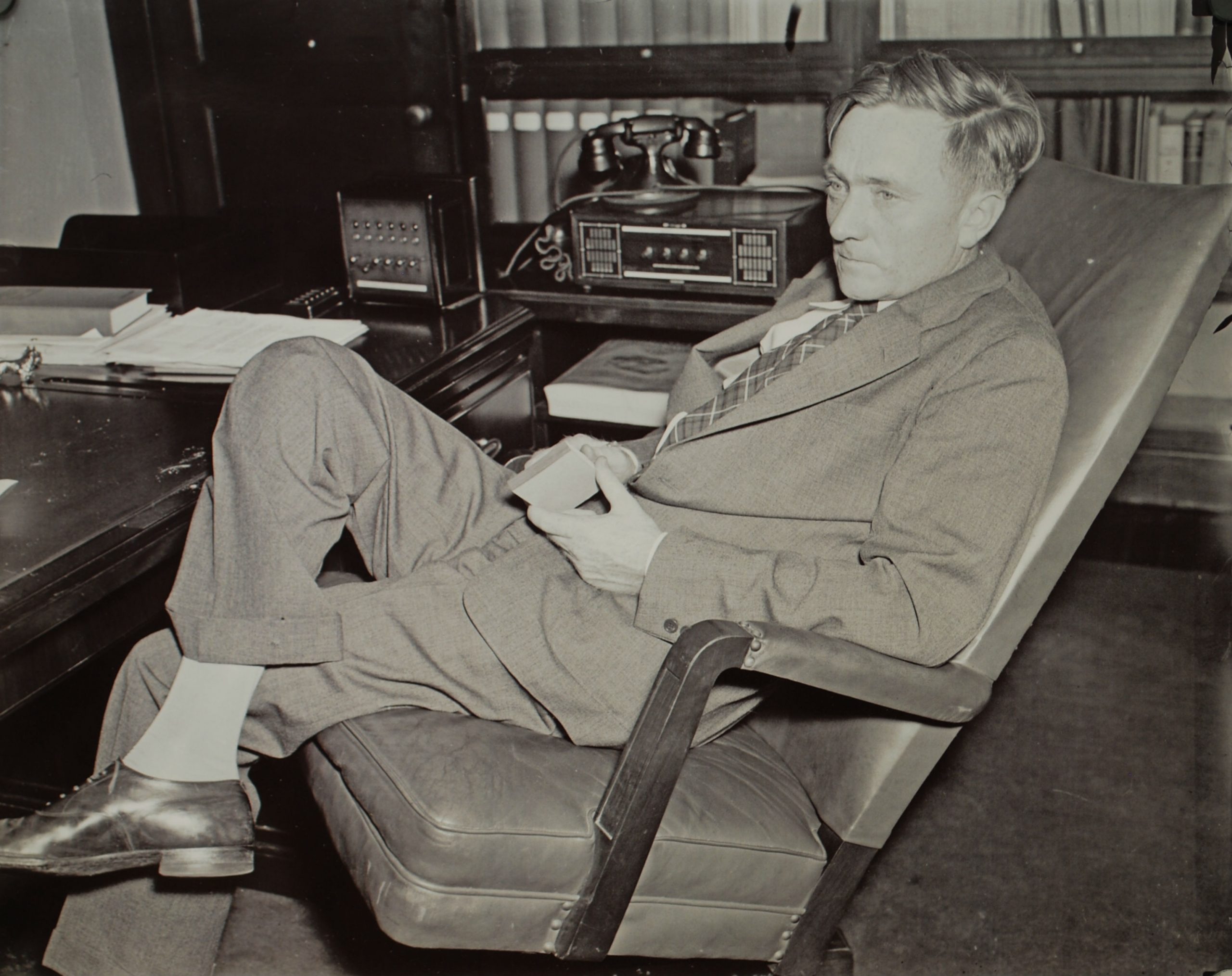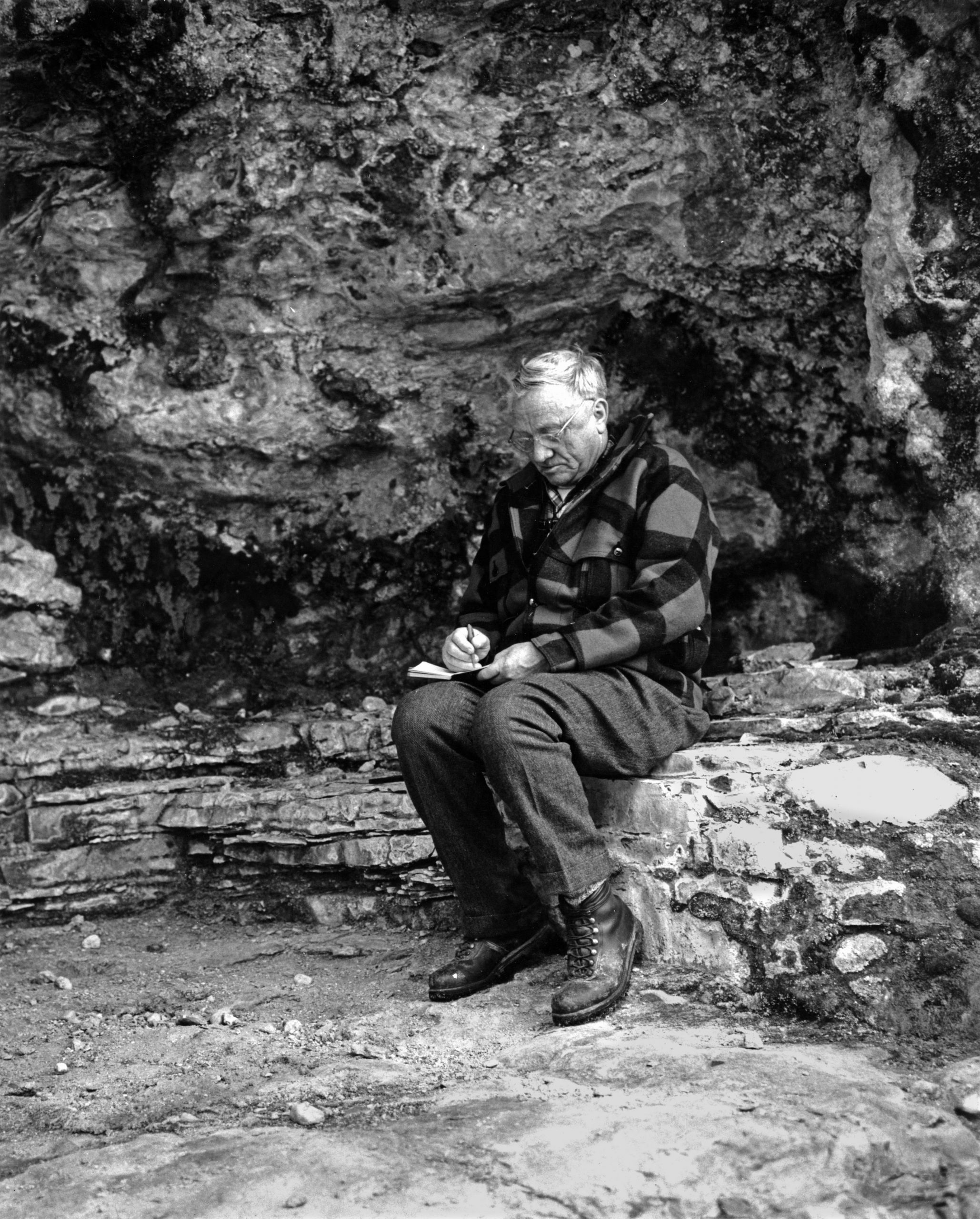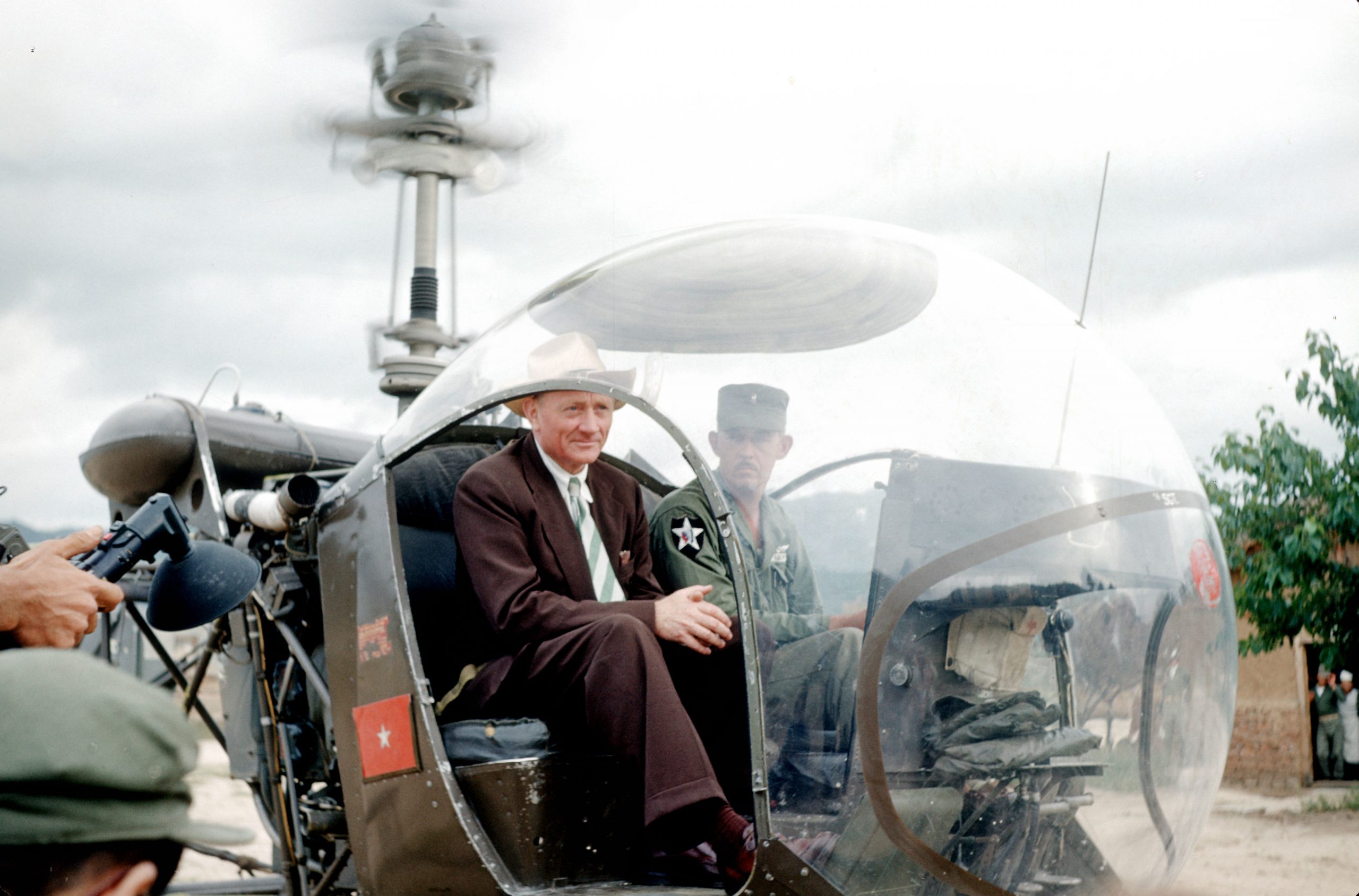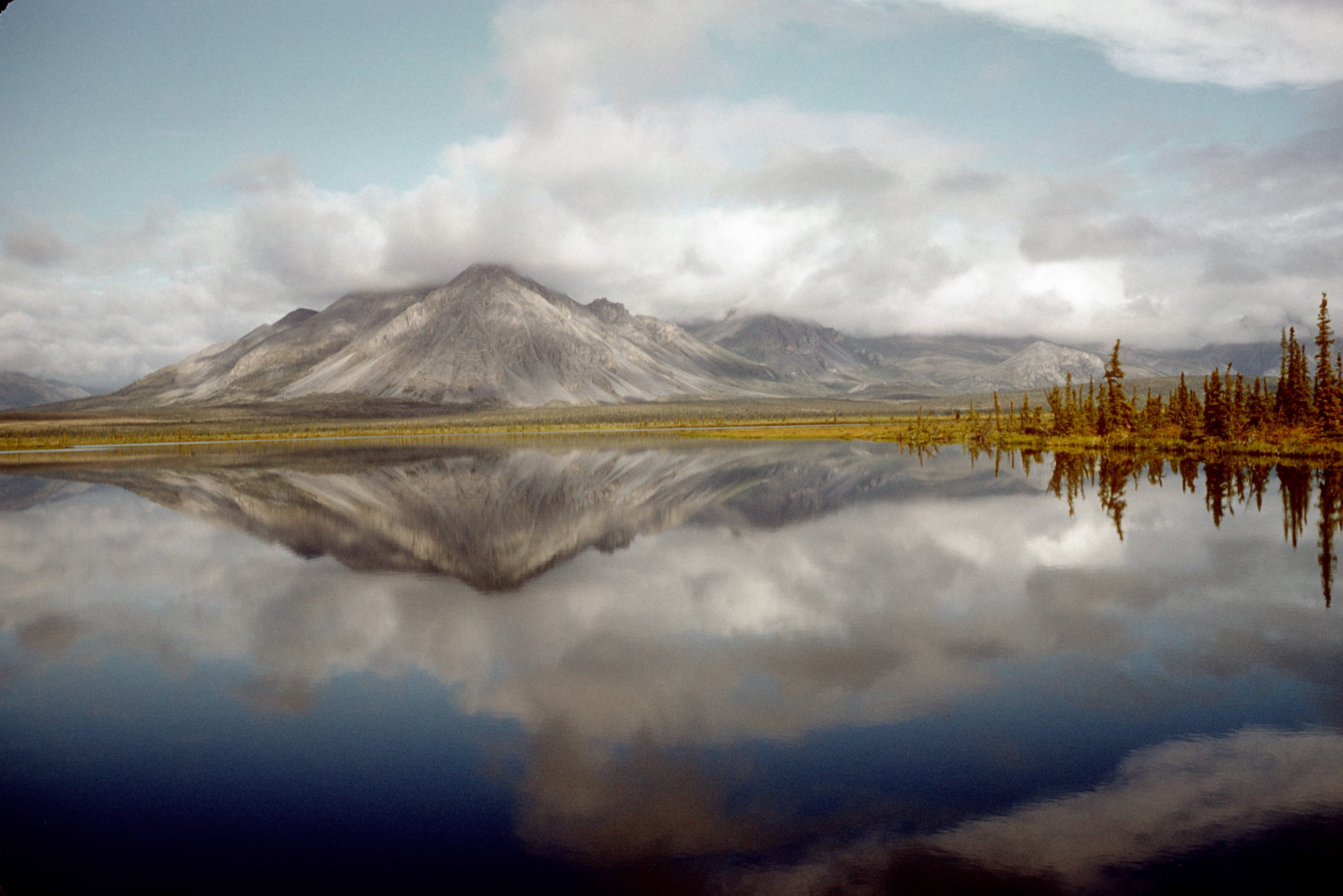An updated and evolving archive of articles and news stories that pertain to William O. Douglas and the Supreme Court cases in which he was involved.
Know of a piece that should be included on this list? Please reach out to the project!

informational Links
- The National Park Service C & O Canal History
- Sierra Club v. Morton: A landmark dissenting opinion
- Griswold v. Connecticut: The right to privacy
- HistoryLink biography of Douglas
- William O. Douglas Trail Foundation
- Wild Bill: The Legend and Life of William O. Douglas
- Yakima Valley Museum Douglas archive
- The full transcript of the first press conference after Douglas was appointed chair of the SEC.
douglas News Clips
2020
- “The New Zealand River that became a person”
— BBC, March 20, 2020
A river in New Zealand was granted legal personhood, part of a growing environmental trend, which relates directly to Douglas’ famous opinion in Sierra Club v. Morton.
2019
- “Kentucky Governor Matt Bevin Sent His Kids to Chickenpox Parties Because He’s a Moron”
— Esquire, March 21, 2019
Included in this news roundup by Charles P. Pierce (and not relating to the headline) is how Florida is “enacting a poll tax for the 21st century.” This is in direct conflict to the 1966 case Harper v. Virginia State Board of Elections, in which Douglas wrote the majority opinion: “Wealth or fee paying has, in our view, no relation to voting qualifications; the right to vote is too precious, too fundamental to be so burdened or conditioned.” - “Dissenting from yourself”
— The Delaware Gazette, March 15, 2019
Judge David Hejmanowski writes a thorough examination on the process by which opinions and dissents are written on the Supreme Court, and also delves into the lore behind a specific case, Meyer et. al. v. United States, in which it was rumored William O. Douglas wrote both the dissenting and majority opinion.
Douglas in Texas taking field notes for his book “Farewell to Texas”. - “Imagine a trail system running from our Washington to that other one”
— The Yakima Herald, March 13, 2019
The hometown paper of William O. Douglas discusses a fascinating proposal to create a transcontinental trail for hiking, biking, or horse riding by “linking a series of regional systems on mostly erstwhile railroad tracks.” The editorial board correctly points out that it is a project Douglas would have “full-throatedly supported.” - “Documentary Filmmaker Shares Legacy of William O. Douglas in Centralia”
— The Daily Chronicle, February 27, 2019
Alex Brown reports on the successful presentation and film screening of this very project at the Olympic Club in Centralia, Washington! - “Lake Erie just won the same legal rights as people”
— Vox, February 26, 2019
Sigal Samuel outlines the history behind Toledo voters giving Lake Erie legal rights. Samuel cites the dissenting opinion of William O. Douglas in Sierra Club v. Morton (1972) as a key, where Douglas wrote that “contemporary public concern for protecting nature’s ecological equilibrium should lead to the conferral of standing upon environmental objects to sue for their own preservation.” - “Is Clarence Thomas headed out or just getting started?”
— CNN Politics, February 22, 2019
Ariane de Vogue gets into the details behind Justice Clarence Thomas issuing an opinion in which “he suggested it was time for the Court to revisit a First Amendment precedent that some believe is a crown jewel of the Supreme Court’s jurisprudence. Thomas targeted New York Times v. Sullivan, a 1964 opinion holding that public officials have a higher burden to prove libel.”Addendum: It should be noted that Justice Hugo Black, who wrote the concurring opinion with William O. Douglas in New York Times v. Sullivan, actually lamented the ruling did not go further: “An unconditional right to say what one pleases about public affairs is what I consider to be the minimum guarantee of the First Amendment… I regret that the Court has stopped short of this holding indispensable to preserve our free press from destruction.” - “Florida sixth-grader charged after confrontation with teacher over Pledge of Allegiance”
— The Washington Post, February 17, 2019
Kristine Phillips covers this story, which was a direct violation of the student’s rights, according to the ruling in West Virginia Board of Education v. Barnette (1943), which states that schools cannot require students to salute the flag or recite the Pledge of Allegiance. - “Legal Rights for Lake Erie? Voters in Ohio City Will Decide”

— The New York Times, February 17, 2019
Timothy Williams discusses the precedent for voters in Toledo, Ohio to give Lake Erie legal rights: the famous dissenting opinion of William O. Douglas in Sierra Club v. Morton (1972). - “Trump’s ‘Emergency’ Action: Unlawful and Unconstitutional”
— The American Prospect, February 15, 2019
Erwin Chemerinsky cites Youngstown Sheet & Tube Co. v. Sawyer (1952) as part of his explanation for why the border wall emergency declaration was unconstitutional. “The Court stressed that Truman’s actions violated the separation of powers and usurped the powers of Congress. Likewise, President Trump’s attempt to spend money for building a wall without congressional appropriation of funds for this purpose directly violates the Constitution.” - “It’s Up to Chief Justice John Roberts to Stop Trump’s Border Wall”
— The Daily Beast, February 15, 2019
Jay Michaelson explains how Youngstown Sheet & Tube Co. v. Sawyer (1952) could play a pivotal role in deciding the fate of Trump’s border wall, writing “the national emergency order is heading to the highest court, one way or another.” - “Yurt So Good”
— North Forty News, January 26, 2019
Peter Moore details his love of yurts, and how William O. Douglas brought yurts to America. “Douglas introduced yurts to the west during a trip in Mongolia. Soon, manufacturers in the U.K. and the U.S. were engineering sturdy supports and insulated walls and plopping yurts down in all sorts of mountain paradises.” - “Before Roe There Was Skinner: How An Oklahoma Case Helped Legalize Abortion“
— High Plains Public Radio, January 22, 2019
Caroline Halter highlights one of the lesser-known cases that was cited as precedent for Roe v. Wade (1973) — the Supreme Court ruling in Skinner v. Oklahoma (1942). “Douglas wrote the majority opinion for Skinner, beginning with these two sentences: ‘This case touches a sensitive and important area of human rights. Oklahoma deprives certain individuals of a right which is basic to the perpetuation of a race — the right to have offspring.’” Thirty years later, Douglas would also side with the 7-2 majority in Roe v. Wade, writing a six-page concurring opinion.
At 40 years old Justice Douglas was one of youngest justices ever appointed.
2018
- “The danger of one-party rule is becoming clear”
–The Hill, October 24, 2018
Kimberly Wehle quotes William O. Douglas in her op/ed on the potential lasting effects from Trump and the Republican party controlling all three branches of government, warning of “a multi-generational chokehold on constitutional interpretation and related social and fiscal policy.” - “The End of the Warren Court”
–Fox & Hounds, October 10, 2018
Tony Quinn writes how “The confirmation of Judge Brett Kavanaugh to the Supreme Court culminates a 50-year struggle by conservatives to gain control of the court and end 80 years of liberal judicial activism,” of which William O. Douglas was a significant part. - “Supreme Court Justice William O. Douglas was not just a legal giant, but also a powerful environmentalist”
–The Seattle Times, August 16, 2018
To mark the 60th anniversary of the famous hike (lead by William O. Douglas) that saved the beach of Olympic National Park from a proposed highway extension, Judge Margaret McKeown (US Court of Appeals, Ninth Circuit) writes at great length on the environmental legacy of Douglas. - “The Backstory: the story behind ‘Justice Takes a Side’”
–The Seattle Times, August 16, 2018
A story behind the story: Judge Margaret McKeown (US Court of Appeals, Ninth Circuit) explains what brought her to research and admire the environmental legacy of William O. Douglas. - “Coastal drilling protesters to Trump: Take a hike’”
–Crosscut, August 13, 2018
Just like how Douglas lead protest hikes to save wilderness areas, Adam Sowards writes how in 2018 similar protests are taking place in Washington after the Trump administration announced it would open nearly all of the Outer Continental Shelf for oil and gas drilling. - “Execution in Mississippi: Who lives and who dies”
— APM Reports, July 3, 2018
A history of capital punishment in Mississippi and America, written by Parker Yesko, including the 1972 Furman v. Georgia Supreme Court ruling that put a moratorium on capital punishment across the country. “It is the poor, the sick, the ignorant, the powerless and the hated who are executed,” wrote William O Douglas in Furman. After Douglas retired, the Supreme Court reaffirmed the death penalty in Gregg v. Georgia (1976).
- “William O. Douglas’ Goose Prairie cabin nominated for National Register of Historic Places”
— The Spokesman-Review, July 2, 2018
Tammy Ayer describes the significance of Douglas’ cabin, built in 1965 in the woods near his boyhood home of Yakima, and how it is now officially part of the Washington Heritage Register. - “The Brady Rule: How a Botched Robbery Led to a Legal Landmark”
— The Marshall Project, June 24, 2018
An engrossing deep dive on the history of Brady v. Maryland (1963), the landmark case that established that prosecution must turn over all evidence that might exonerate a defendant. The piece, written by former public defender Thomas L. Dybdahl, explains how Douglas (writing for the majority) upheld a lower court’s murder conviction. However, in writing this conviction, despite “no legal need to say more,” Douglas was only getting started. “After a few paragraphs in support of the lower court ruling, he turned to what was really on his mind. ‘We now hold,’ he wrote, in words dear to every defense attorney, ‘that the suppression by the prosecution of evidence favorable to an accused on request violates due process where the evidence is material either to guilt or to punishment.’” - “The NFL kneels before the altar of profits”
— The LA Times Editorial Board, May 24, 2018
The Editorial Board of the LA Times offers a sharp criticism of the NFL’s response to Colin Kaepernick and other players kneeling during the national anthem. Though acknowledging it is not bound by the ruling because the NFL is a private entity, the Board cites West Virginia State Board of Education v. Barnette (1943), in which the Supreme Court ruled children couldn’t be forced to recite the Pledge of Allegiance. “Isn’t it more than a little un-American to demand that citizens salute the flag and ‘show respect’ for the national anthem?… ‘Words uttered under coercion are proof of loyalty to nothing but self-interest,’ wrote Justices Hugo Black and William O. Douglas. ‘Love of country must spring from willing hearts and free minds.’” - “Tell Interior not to sell off the Arctic National Wildlife Refuge”
— High Country News, May 23, 2018
Tim Lydon writes on the history of how the Arctic National Wildlife Refuge came to be, with William O. Douglas playing a key role, and the importance of continuing to protect it. - “Justice Douglas’s Famous Hike”
–National Park Service, February 22, 2018
How William O. Douglas helped save the trails along the Chesapeake & Ohio Canal from being turned into a road. - “Biggest hurdle for Trump’s border wall? The remote, rugged terrain”
–McClatchy DC Bureau, January 22, 2018
Stuart Leavenworth sheds light on a somewhat-overlooked aspect of the border wall controversy: the sheer impossibility of constructing it. He specifically cites the difficulties that would be encountered in the Santa Elena Canyon, quoting Douglas, “who once wrote that Santa Elena ‘is a canyon to travel with the utmost respect.’”

Last Lake in the Brooks Range, Alaska 1956. Photo by William O. Douglas
2017
- “50 years ago, Red River Gorge almost became a lake. The story of a hike that saved it.”
— The Lexington-Herald Leader, November 17, 2017
Tom Eblen provides an in-depth historical account of how, in 1967, sitting Justice William O. Douglas lead a hike through the Red River Gorge and saved the river from a dam. “It’s hard to imagine now, but the Red River Gorge, a natural and archaeological wonder that has become one of the region’s most popular hiking and rock-climbing destinations, was almost flooded.” - “When Does the Right to an Attorney Kick In?”
— The Atlantic, September 15, 2017
Maura Ewing writes of the appalling lack of lawyers for defendants in the United States court system. This, despite Gideon v. Wainwright (1963) and Argersinger v. Hamlin (1973), two cases in which William O. Douglas was part of the Supreme Court majority that ruled it a requirement for offenders of serious crimes, and then misdemeanors and petty charges, respectively. “[N]o person may be imprisoned for any offense, whether classified as petty, misdemeanor, or felony, unless he was represented by counsel at his trial,” wrote Douglas for the majority in Argersinger. However, pretrial legal representation remains a grey area.
2016 and earlier
- “A Supreme Court Justice Predicted Trump’s Policing Plan 50 Years Ago, Warned Of ‘Totalitarianism’”— The Huffington Post, September 26, 2016
Nico Pitney writes of the prescience of William O. Douglas in his lone dissenting opinion in Terry v. Ohio (1967). “This is the ‘new regime’ of which Douglas warned… The Terry doctrine is a major contributor to the widespread antipathy toward the police that many people in minority and low income communities demonstrate, because they know that, in the words of the Douglas dissent, ‘the police can pick a person up whenever they do not like the cut of his jib.’” - “Fifty Years Ago, A Philosophy Professor Won A Landmark Case at the Supreme Court”
— Forbes, May 29, 2015
Nick Sibilla expounds upon the lasting benefits of Lamont v. Postmaster General (1965), the first instance in the 175-year history of the United States that the Supreme Court ruled that an act of Congress violated the First Amendment. William O. Douglas wrote the (unanimous) majority opinion. “The Court admirably refused to buckle to both Cold War paranoia and the government’s desire to curtail constitutionally protected liberties. In the years since, this landmark decision has served as a vital precedent for the protection and expansion of freedom of speech.” - “Brown v. Board of Education Came Very Close To Being A Dark Day In American History”
— ThinkProgress, May 15, 2015
Ian Millhiser recounts the events that could have unfolded to result in the Supreme Court voting to continue to allow school segregation in America, and how some justices were on the fence about which way to vote. William O. Douglas was not on the fence. - “William O. Douglas Statue”
— DC Bike Blogger, October 16, 2014
The DC Bike Blogger discovers a William O. Douglas statue, and it leads him down a rabbit hole of history. - “Distraction from the Storm”
— Words of Law, October 31, 2012
Trapped inside by Hurricane Sandy, Mark S. Weiner finds William O. Douglas in an unexpected place. - “Celebrate ‘Griswold’ By Asking Candidates Their Stand on Contraception”
— Ms., June 7, 2011
Carol King details the importance of Griswold v. Connecticut (1965) in the history of reproductive rights. “Griswold established a constitutional right to marital privacy that, in the words of Justice William O. Douglas, would no longer allow ‘the police to search the sacred precincts of marital bedrooms for telltale signs of the use of contraceptives.’” - “Supreme Court Justice William O. Douglas – Mossadegh’s #1 US Admirer”
— The Mossadegh Project, April 4, 2011
Arash Norouzi provides an in-depth account of the unique relationship that Douglas had with former Iranian Prime Minister Mohammad Mossadegh. - “Conservationists William O. Douglas, Polly Dyer, and others begin a 22-mile hike along the Olympic coastline to protest the proposed road construction on August 19, 1958”
— HistoryLink, December 29, 2010
Paula Becker recaps the events of the famous hike to save the “longest unbroken piece of primitive coastline in the United States.”
